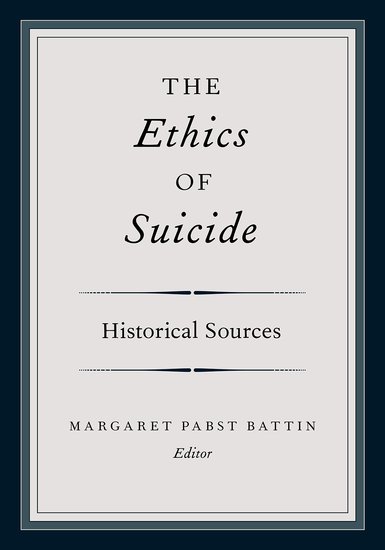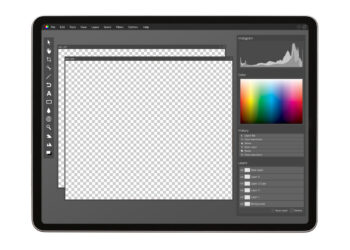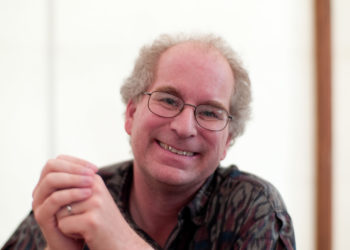
This month sees the publication of a book that represents an unprecedented example of library-author-publisher collaboration. While trying to avoid any blatant promotion of the book itself, I would like to discuss the origins and some of the implications of the collaborative project, which I believe are significant.
Before I begin, several disclosures are in order: first and most obviously, the University of Utah’s J. Willard Marriott Library is my employer. Second, Allyson Mower reports to me in her role as Scholarly Communications and Copyright Librarian here in the library. Third, David Crotty (our Editor in Chief here in the Scholarly Kitchen) is an employee of Oxford University Press, though not directly connected with their books program.
With those notices out of the way, let me explain the genesis of this project and why I think it’s so exciting and potentially important.
History
In 2010, Allyson Mower was contacted by Peggy Battin, a professor in the University of Utah’s philosophy department. Dr. Battin had a question about the copyright status of a source she was using in the course of putting together what was turning out to be a monumental scholarly compilation and discussion of historical sources on the ethics of suicide. The book had originally been envisioned as a volume of roughly 800 pages, but — due to the wealth of available and relevant sources — had grown substantially, and the manuscript was now approaching 1200 pages.
While Dr. Battin had a publication contract with Oxford University Press (OUP), this manuscript was clearly more than the publisher was going to be able to handle in print format. In the course of their conversations about this situation, Allyson and Dr. Battin hit upon a novel idea: what if OUP were to publish a redacted version of the manuscript as a roughly 750-page print volume, and the Marriott Library were to host the full manuscript on the Web?
Many conversations and meetings between Allyson, Dr. Battin, and representatives of OUP and the Marriott Library ensued. In the process, an unusual (actually, we believe unprecedented) scholarly resource began to take shape: a condensed printed version of a scholarly book connected (by means of chapter-level QR codes) to a full online version of the same book, the latter featuring links to online versions of primary sources, or to library catalog records where the sources are available only in print, as well as interactive features that allow readers to submit corrections, suggest additional sources, and discuss the issues covered in the book. Best of all, the online version of the book would be made freely available to all.
Preparation
Between fall of 2010 and the 2015 publication of the book and its online archive, Allyson and a team of librarians, library staff, research assistants, and contractors provided copyright research (including fair use evaluations), re-keying of PDF files as text files, and the creation of an archive infrastructure including site architecture, metadata assignment, establishment of a title-based domain name, and the creation of QR codes. They also worked with Dr. Battin to create a layout format and general site design for the archive, and created links to library records for original sources in WorldCat.
Throughout this period, Dr. Battin was finalizing the text of the book and continuing to add new sources as she discovered them — a luxury that was made possible only because the project’s definitive home would now be a dynamic online archive.
The Digital Archive
The Ethics of Suicide: Historical Sources Digital Archive is published on a blog platform. From its homepage, the reader can link to a table of contents covering the full version of the book, which features primary sources organized chronologically and by geographic region, beginning with an Egyptian didactic story from the early 1000s BC and ending with pieces of analysis, commentary, and theology by living authors from a variety of political, intellectual, and faith traditions.
Alongside the table of contents is a set of content outlines that allows the reader to jump immediately to contributions by author, by intellectual or cultural or religious tradition, by era, and by geographical region. The site’s content is full-text searchable, of course, and readers may comment online (comments are moderated, due to the potentially touchy and even sacred nature of the subject matter), may submit corrections, and may submit additional material to be considered for inclusion in the archive.
Implications for the Future of Library Publishing
This project is interesting for quite a number of reasons. Apart from whatever value and interest the topic and the content hold for the world of historical, sociological, and ethical scholarship, the publishing model itself both exemplifies long-known benefits of hybrid print/electronic publishing and points to possible future directions in the relationship between publishers and libraries. For example:
Complementary strengths and weakness of print and digital. Very often the choice between print and e-publishing constitutes a trade-off of one set of strengths and weaknesses for another: printed books are a pleasure to read, but poorly suited for distribution. Ebooks are easily accessible, but can be painful to read at length. The content of a print book is static, which means you can count on it (for better and for worse) to stay the same over time; the content of an ebook is dynamic and doesn’t offer the same guarantees of consistency. Print books have severe practical length limitations; ebooks don’t. Print books can be read without a power source. Ebooks offer full-text searchability. And so forth. But by publishing this book in a hybrid format and partnering with a library in the creation of its online version and archive, OUP has counterbalanced all of the downsides of each format: The Ethics of Suicide is simultaneously easily readable, fully searchable, portable, expandable, dynamic, static, globally available, costly, and free.
Potential for real library/publisher partnership. Most current examples of library publishing involve libraries taking on publishers’ traditional roles, and in some cases might actually more accurately be termed mergers and acquisitions: a university press’s reporting line is moved into the library; a library acquires or creates new open access journals and publishes them in-house; a library creates a repository of locally-produced faculty scholarship, some of it formally published elsewhere but some of it not; a library creates a publicly-available online archive of student theses and dissertations. But the Ethics of Suicide project is something very different: in this case, the publisher basically did what it has always done (creating a high-quality print volume and distributing it according to longstanding practice), and the library is doing something quite similar to what it has always done (organizing and maintaining a scholarly archive and making it accessible by the creation of extensive metadata), but by fulfilling these roles in cooperative and complementary ways, the two organizations have created a living document that is far more accessible and useful to scholars and interested readers than the book alone would be.
Book as database. There’s nothing unprecedented about a book being used as a database—remember the piles of printed volumes we used to carry out of our college libraries’ stacks, intending not to read them but to interrogate them, looking for relevant bits of information? Nor is there anything especially new about a formerly print-only title becoming an online database of content, updated as needed on an ongoing basis. But I’m not aware of any previous example of a publisher releasing a traditional print monograph alongside an expanded and freely-available digital version, the latter to be maintained (and its continued expansion moderated) by a library. In some ways, this is the mirror image of the traditional “freemium” model, which makes a bare-bones or limited version of a document or service available for free and an expanded or enhanced version available at a cost. Here the more limited version (in terms of content and functionality) is available at a cost to those who prefer the more comfortable reading format, and the expanded, feature-rich, and dynamic version is available at no charge in a version more suited to research than to linear reading. None of this is to say that one version is “better” than the other, only that they offer interlocking sets of strengths and weaknesses, and thus the two versions truly complement each other and together constitute a whole that is much stronger and more useful than either version would be all by itself.
Library as scholarly problem-solver. It’s important not to overlook the fact that in this particular case, the library solved a serious and keenly felt problem for both the scholar in question and her publisher. Dr. Battin wanted to publish her book, and OUP wanted to publish it. Dr. Battin didn’t want to exclude any of the relevant and significant sources she had gathered, but OUP couldn’t possibly publish all of them in the usual way. The library had the knowledge and capacity necessary to solve both of those problems to the satisfaction of both parties, and to the benefit of scholarship worldwide. The library has always existed, in large part, to solve problems for scholars — but in this case we were able to do so in a new way and in a way that created benefits that will be felt far beyond the boundaries of our campus.
I make no grand claims for this project — I don’t see any reason to believe that it’s going to change everything about scholarly publishing as we know it. But I do find it tremendously exciting both for the quality and quantity of important content that it has made available to billions of people around the world at virtually no cost to them, and for the example it offers of genuinely symbiotic collaboration between scholars, librarians, and publishers.
Discussion
25 Thoughts on "Library Publishing Redux: An Unprecedented Example of a Scholar/Library/Publisher Partnership"
Fascinating. In this case the book came first historically, but functionally the print book is an abridged or condensed version of the website at a given time. The big question is will the print book sell? If so there may be a lot of websites that could use this model and publish print versions.
A few precedents might be of interest to readers.
Catholic University Press published a book about the court rolls of Ramsey, Hepmangrove, and Bury but not the transcription of the court rolls themselves, which were published online by the Scholarly Publishing Office (SPO) of the University of Michigan Library: http://quod.lib.umich.edu/r/ramsey/ . SPO, like the University of Michigan Press, was absorbed into Michigan Publishing.
A similar situation occurred with “Women’s Letters from Ancient Egypt, 300 BC – AD 800”. A brief version was published by the University of Michigan Press, and SPO created an expanded version, with links to the original encoded documents, for inclusion in ACLS Humanities E-Book: http://hdl.handle.net/2027/heb.90014.0001.001 .
Another project too large for conventional university-press publication was a scholarly edition of Henry Machyn’s “Chronicle”. In this case, the University of Michigan Press wanted to publish only the modernized version of the text, whereas the editors wanted to publish a transcription with supplied text as well. Attempts to do the two separately, with linking, ended up unsatisfactory to all parties (background at http://www.ultraslavonic.info/eprints/20090911.pdf ), so eventually SPO handled the entire project: http://quod.lib.umich.edu/m/machyn/ .
All that said, I’m pleased to see that the OUP book that Rick mentions uses QR codes to link from each chapter to the full online version. Neither of the projects with print editions that I mentioned provided such granular linking from the print to electronic editions.
Seems to me that this is a modified co publishing agreement. I would hope more of these kinds of publishing ventures will occur in the future. The interesting feature is the linking to original sources something which should have been done and I would hope will be done in the future. Regarding STEM, the linking of data to the data bases which hold the data should be a feature of most if not all e publications.
An interesting project and a well-thought-out post. (Nope, no criticism to make: this is good stuff.)
People are talking as though the printed book was the scholarly product and the website was supplemental material. It is the other way around.
There are more precedents. In 1995 MIT Press published City of Bits by William Mitchell, which had both a print version and a companion web site. The idea of publishing in various interconnected ways in print and online, all related to a central archive, was actually first introduced by Cornell librarian Ross Atkinson in a 1993 article in College & Research Libraries 54/3 (May) titled “Networks, Hypertext, and Academic Information Services” and later picked up and expanded by Robert Darnton in his classic NYRB essay titled “The New Age of the Book” (March 1999). It was subsequently the inspiration for both the ACLS Humanities E-Book and the Gutenberg-e projects, which were cooperative projects between libraries and presses. At Penn State our press and the library jointly established an Office of Digital Scholarly Publishing. It was our hope to publish enhanced editions of print volumes online. E.g., for our series in Romance studies, we wanted to be able to link references to original sources in footnotes to the works available OA in such places as the Bibliotheque Nationale, for books in the social sciences to have data sets, raw interview materials, and other research materials accessible through the ODSP to supplement the printed volumes, for books in art history to have additional artworks linked online so that the range of references would not be limited to what could be afforded to put in print form, etc. We also did publish an innovative multimedia introduction to the French Revolution that involved illustrations, audio clips, and the like to supplement the print text. Other presses for some time have been publishing some materials online, e.g., a book by Stanford University Press about copyright whose 50-page bibliography is online only hosted by the Stanford Library (which oversees the press) and not in the print edition. It is good to learn about this new collaboration between Utah’s library and Oxford UP, but the truth is that such collaborations have been ongoing for some time.
With respect, Sandy, I don’t think any of the examples you’ve provided constitutes a precedent for the project I described in my posting. City of Bits is a book with a companion website, yes, but it’s hardly the same thing as the project I’ve described here–and the e-version isn’t free. Ross Atkinson’s and Robert Darnton’s articles were ideas, not projects; the ACLS Humanities E-Book and Gutenberg-e projects are digitization projects that make previously-published titles available online. As far as I can tell, the PSUP’s series in Romance studies published books simultaneously in print and ebook formats, making the e-version freely available online, but none of those e-versions is the kind of expanded and dynamic online resource I’ve described here. And the French Revolution book you describe was a print book published with an accompanying CD-ROM, if I’m not mistaken.
In no way do I mean to disparage any of these excellent projects. But they don’t seem to me to represent the same thing, either quantitively or qualitatively, as what my colleagues have done with Ethics of Suicide.
The Gutenberg-e project published only original monographs, as revised versions of dissertations. The ACLS Humanities E-Book project did provide digitized copies of older titles, but its principal focus was to publish new ebooks of the kind Darntonj had envisioned written by senior scholars. It is true, of course, that these publications were only available via library subscription. And you’re right that the Romance studies series did not have the enhanced ebooks we had hoped to provide, but the original plan was to do so. It’s good that OUP and your library have gone ahead with implementation of such a project.
For what it’s worth, while ACLS History E-Book (its original name) did hope to include many e-books that transcended the boundaries of print, in the end few publishers took them up on the offer to host these. Instead, the project has come to included almost all books also published in print.
True, and the main reason for that is the subscribing libraries wanting more digitized older titles to justify the expense of the license.
The Gutenberg-e project published only original monographs, as revised versions of dissertations.
Right you are — I was confusing it with Project Gutenberg.
The OUP page for this book certainly does not highlight the fact that the text is FREELY available online (*clicked on link from Marriott website). The OUP webpage alerts that “online archive available at___________” And there is no link to connect to the online archive. The content link is on the page but it is not clear that the digital archive includes everything in the print edition plus additional content. OUP seems to be promoting the enhancement only.
I wonder if the customers who BUY this print edition will feel a wee bit annoyed that they bought an abridgment and that the full content and enhancements are freely available.
This is neither a sustainable publishing model nor is it an example of honest/transparent marketing.
Please note that this is not new, 1995 Ian Foster, Designing and Building Parallel Programs, Addison-Wesley, 1995 ALONG with website, hosted at the authors institution….in 1995 this worked well, the book sold well and the website was a first. The author maintained the page and provided links and updates when motivated. FYI, it was clearly stated in the book that there was a companion web edition freely available. Doing this approach today would result in ZERO sales of the print edition but a lot of happy people accessing the content for free. Free trumps all other models.
It looks to me like there’s some kind of coding error on the OUP page that you reference (which can be found here, for those readers interested in checking it out). But there is indeed a link to the online archive on that page; it’s embedded in the text of the two bullet points that follow. The text alongside those bullets is a description of the online archive’s content.
Hopefully OUP will fix the coding on that page to make it clearer.
Thank you for pointing out the error on the OUP web page — we’ll address this as soon as possible. I think OUP can both transparently indicate the existence of the online archive, while also making clear the value and usefulness of the print product.
Regarding the value of the print product, I think this may be a major test case. $150 is a lot to pay for the values and conveniences of print. This may be an elegant measure of those values and conveniences, or not. Time will tell.
Indeed it will be interesting to see, David, though we have published a paperback at $49.95 which is more accessible.
I have never bought the argument that print is obsolete, just as with radios. Wouldn’t it be exciting if there were a print market for web content. Perhaps the collected posts of Rick Anderson?
The OUP / University of Utah project is the next step in an evolution of projects. Sandy Thatcher mentions some precursors. In 2009, the American Mathematical Society (AMS) faced a problem similar to that of Mower and OUP. Judy Green (Marymount University, Arlington, VA) and Jeanne LaDuke (DePaul University, Chicago, IL) were writing a history of the women who had received Ph.D.s in mathematics in the United States up to the year 1940. With the cooperation of the women, their heirs, and several other sources, especially the Smithsonian Institution, they gathered detailed biographies of the women, achieving a greater success than they imagined. The AMS published condensed versions of the biographies as a 345-page book and a free, online 665-page supplement with further details.



